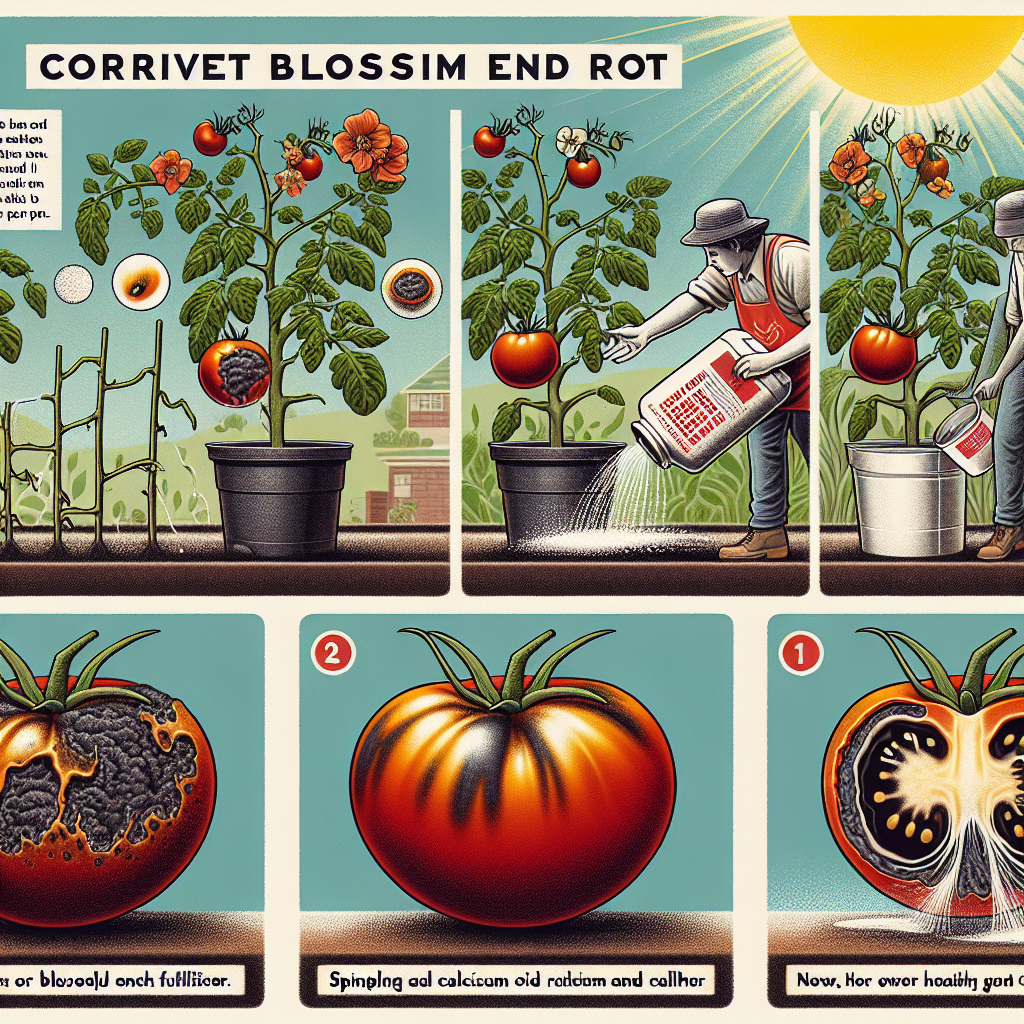
How to correct blossom end rot on tomatoes
Understanding Blossom End Rot on Tomatoes
Blossom end rot is a common disorder that affects tomatoes, among other fruits and vegetables. It manifests as dark, sunken spots on the bottom of the tomatoes, leading to significant loss of marketable fruit. This issue is often misidentified as a disease, but in reality, it stems from physiological stress and nutritional deficiencies. Understanding the causes and solutions for this condition is vital for any gardener looking to grow healthy tomatoes.
What Causes Blossom End Rot?
Blossom end rot primarily occurs due to a deficiency of calcium in the fruit. However, several factors can contribute to this condition:
- Nutrient Deficiencies: Low calcium levels in the soil can lead to blossom end rot. Tomatoes require calcium for proper cellular structure.
- Irregular Watering: Fluctuations in soil moisture can lead to stress. Dry spells followed by heavy watering can impair calcium uptake by the roots.
- Rapid Growth: If plants grow too quickly due to excess nitrogen, they may not take up enough calcium.
- Soil pH: An improper pH can hinder nutrient absorption, affecting calcium levels.
Understanding these root causes is essential for preventing and correcting blossom end rot on tomatoes.
Identifying Blossom End Rot
Detecting blossom end rot is straightforward, but it's important to differentiate it from other tomato disorders:
- Visual Symptoms: Look for dark, leathery patches at the blossom end of the tomato. The area typically turns brown to black and may appear sunken.
- Fruit Stage: Blossom end rot usually appears in the early stage of fruit development, often as the tomatoes are ripening.
"Prompt identification of blossom end rot can help save your crop and improve your gardening success." - Gardening Expert
Preventing Blossom End Rot
Prevention is the best method when it comes to blossom end rot. Here are some effective strategies:
Soil Preparation and Testing
Testing your soil before planting can provide necessary insights into nutrient levels and pH balance. Here's how to prepare your soil:
- Conduct a Soil Test: Use a reliable soil test kit to determine calcium levels and overall nutrient content.
- Adjust Soil pH: The ideal pH for tomatoes is between 6.0 and 6.8. Use lime or sulfur to adjust as necessary.
- Add Organic Matter: Incorporate plenty of compost to improve nutrient retention and soil structure.
Watering Practices
Consistent watering is crucial to maintaining healthy tomato plants. Here are some watering tips:
- Regular Schedule: Water consistently to avoid fluctuations in soil moisture. Aim for deep watering at least twice a week during dry spells.
- Mulching: Use mulch to help retain soil moisture and regulate temperature.
- Avoid Overhead Watering: This can cause the soil to dry unevenly. Invest in drip irrigation or soaker hoses for better results.
Correcting Blossom End Rot on Tomatoes
If you discover that some of your tomatoes exhibit signs of blossom end rot, don't worry—there are several steps you can take to correct the issue:
Improving Calcium Levels
One of the first steps in correcting blossom end rot on tomatoes is ensuring adequate calcium levels in the soil. Here’s how to do that:
- Calcium Supplements: Apply products such as gypsum or calcium carbonate to increase soil calcium.
- Foliar Calcium Spray: Use a calcium spray that can be applied directly to the plant leaves to help mitigate deficiencies.
- Bone Meal: Add bone meal to the soil before planting, as it is a good natural source of calcium and phosphorus.
Maintaining Consistent Watering
Fluctuating moisture levels can be detrimental. Here’s how to ensure stable watering:
- Monitor Soil Moisture: Use a moisture meter to get an accurate reading of soil hydration.
- Water Deeply: Ensure that the top 6 inches of soil is consistently moist, but avoid waterlogging.
- Adjust for Weather: Increase watering during hot, dry periods and reduce during cooler, rainy spells.
Optimize Fertilization
Using the correct type of fertilizer can stabilize nutrient levels. Consider the following tips:
- Balanced Fertilizers: Use a balanced fertilizer that contains calcium and other essential nutrients.
- Follow Recommendations: Adhere to soil test recommendations to provide appropriate amounts of nitrogen, phosphorus, and potassium.
- Organic Options: Consider organic fertilizers such as composted chicken manure, which help improve soil structure and nutrient retention.
Treating Affected Plants
While you cannot reverse damages that have already occurred to the tomatoes, you can minimize future impacts:
- Prune Affected Fruits: Remove tomatoes that have visible signs of blossom end rot to divert the plant's energy toward healthy fruit.
- Monitor Plant Health: Keep an eye on your plants, looking for signs of stress or deficiencies.
- Maintain Nutrient Balance: Continually evaluate and adjust soil conditions to ensure a balanced nutrient supply.
Conclusion
Blossom end rot can be a frustrating issue for tomato growers, but with proper understanding and proactive measures, it can be effectively managed and corrected. By ensuring adequate calcium levels, maintaining consistent watering practices, and optimizing fertilization, you can significantly reduce the incidence of this disorder in your tomatoes.
Remember, gardening is a learning process; each season provides opportunities to improve and adapt. With these strategies in place, you on your way to enjoying a bountiful harvest of healthy, delicious tomatoes!
By Guest, Published on September 21st, 2024